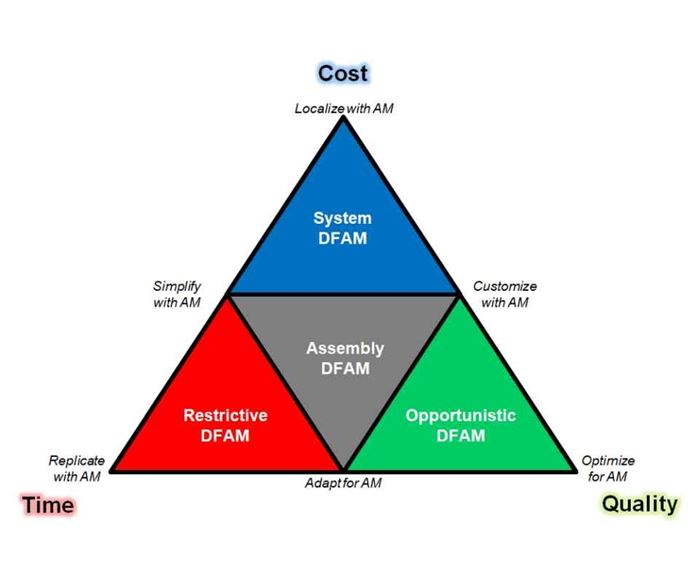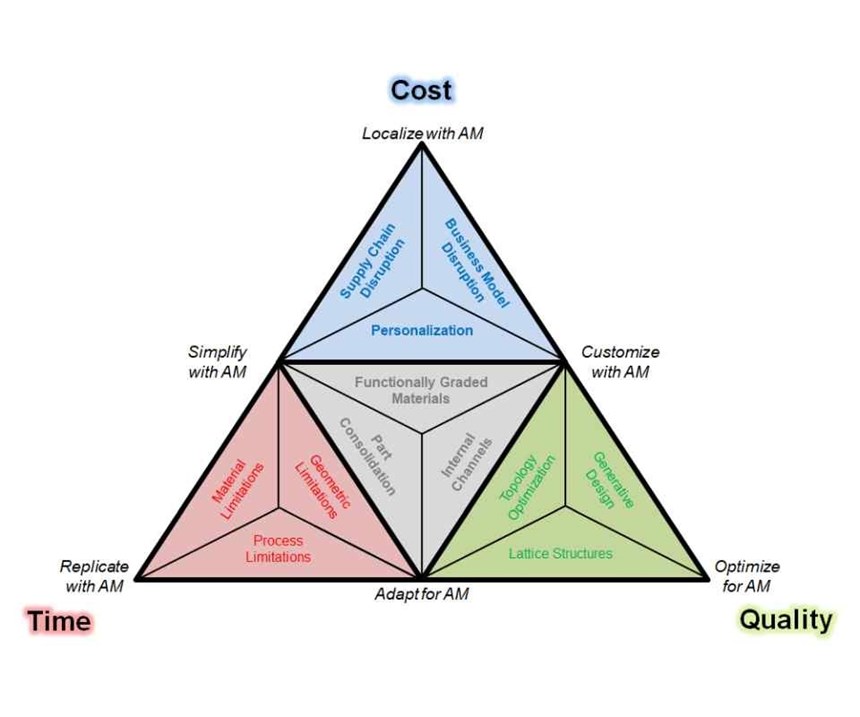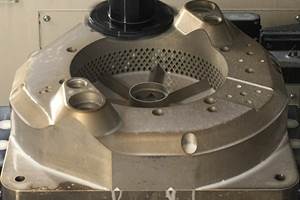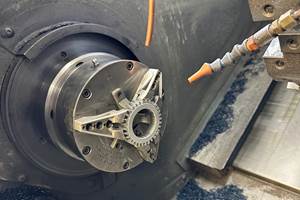The Many Possibilities of Additive Manufacturing
Why would anyone want to use additive manufacturing?
Additive manufacturing (AM) provides design and material freedoms for making parts that are impossible or too expensive to fabricate with traditional manufacturing processes such as milling and casting. Although design for additive manufacturing (DFAM) has its limitations, it also enables new opportunities like lattice structures, conformal cooling channels and more.
We often think only at the part level for DFAM, but it can be applied at the assembly and system levels as well (see first figure above), and different benefits accrue at the different levels. The many possibilities of AM outweigh the limitations.
Yet being enamored with these attractive possibilities—the “what” and the “how” of AM—still doesn’t get us to the “why,” the ultimate reason for using AM. It has to deliver on a value proposition. As William Brindley from Pratt & Whitney once told me, “We aren’t going to fly a 3D-printed part just because it’s cool. It has to buy its way onto the engine just like any other part.”
Cost is only one factor that potentially drives this acceptance. Quality and time (speed) are the other two main drivers, and AM can help improve all of these when used effectively. For instance, lattice structures can be used to create lighter-weight components with better strength-to-weight ratios. This improves part quality while reducing the cost of AM by using less material and build time to make the part. This may even enable a material substitution, improving the life and durability of the part. In medical applications such as implants, lattice structures improve osseointegration, which improves bond strength and helps patients recover faster. Over time, this leads to fewer implant revisions, fewer replacements and ultimately fewer surgeries.
Topology optimization also can be used to create lightweight structures for aerospace or space structures. Why is light weight good in these applications? I have seen estimates that saving 1 kilogram of weight on a plane saves $3,000 a year in fuel costs. In space applications, the savings jumps to $10,000 per kilogram of weight saved, or the company can trade the weight savings to haul more payload, making the launch more profitable. Companies also save money because they improve their material-use buy-to-fly ratio, which I have seen as high as 80-to-1 in some cases. Less material is needed to make a topology-optimized component, reducing material costs and build time, and less scrap is produced.
AM also can be used for functional prototyping and replacement parts. This gives companies a speed advantage, improving flexibility and agility by reducing product development time and manufacturing lead time. Printing replacement parts on demand can reduce inventory carrying costs in companies and improve logistics and support in military operations, especially in remote locations.
Reduced tooling needs make AM useful for customized parts and components. This enables new “manufacturing as a service” business models that entrepreneurs and startups can exploit for low-volume production runs of customized product offerings. Larger companies can use AM to print custom tooling, fixtures, patterns and molds for low-volume production runs.
Part consolidation reduces assembly time as well as labor costs. It also can reduce procurement costs and supply-chain complexity. Part consolidation can improve the structural integrity of parts and reduce possible leakage points in manifolds and other high-pressure applications.
AM can produce intricate internal channels to lightweight components or improve heat-transfer efficiency in piston crowns or turbine blades. Conformal cooling channels inside an injection-molding tool can speed production by improving cooling efficiency. The surface roughness inherent in AM builds actually helps improve the heat-transfer efficiency of heat exchangers, opening avenues for new geometries that better conform to their use.
By bringing AM in house, companies often can gain additional leverage over their supply chains, reducing procurement costs. Testing and component validation can be expedited. Inventory costs can be reduced by moving to digital inventories that leverage AM’s on-demand manufacturing capabilities, like printing when you need it. This increases flexibility by making the company more nimble in response to fluctuations in the market. Companies then can deliver products more quickly or deliver a higher-quality product closer to when it is needed.
The benefits of AM are many, and the challenge arises because the value proposition can vary widely by application, company and industry. Understanding the opportunities as well as the restrictions is important to getting the most out of AM and ensuring that your part will fly not just because it is cool, but also because it brought value to the end product just like everything else.

UPCOMING CONFERENCE
Learn more about the benefits of additive manufacturing during the 2018 Additive Manufacturing Conference
September 11-12. The conference is co-located with the International Manufacturing Technology Show (IMTS) at McCormick Place in Chicago, Illinois.
Related Content
5 Tips for Getting the Most From the Historic Return of North America’s Biggest Manufacturing Event
Plan. Explore. Think of the future. And oh yeah, the shoes. Here is how to get the most from the major manufacturing event that none of us have experienced in four years, and that many will be experiencing for the first time.
Read More10 Ways Additive Manufacturing and Machining Go Together and Affect One Another
Forget “additive versus subtractive.” Machining and metal additive manufacturing are interconnected, and enhance the possibilities for one another. Here is a look at just some of the ways additive and machining interrelate right now.
Read MoreChuck Jaws Achieve 77% Weight Reduction Through 3D Printing
Alpha Precision Group (APG) has developed an innovative workholding design for faster spindle speeds through sinter-based additive manufacturing.
Read MoreAn Additive Manufacturing Machine Shop
Finish machining additively manufactured implants requires different pacing and workflow than cutting parts from stock — different enough for an experienced manufacturer to warrant a dedicated machine shop.
Read MoreRead Next
Encountering Surface Finishes in the Everyday World
Surface measurement is becoming increasingly important to ensure proper performance of a manufactured product. Advanced surface measurement tools are not only beneficial in the manufacturing industry but also have unconventional applications.
Read MoreThe Automation Event for CNC Machine Shops
Get sensible, real-world automation solutions during this half-day workshop co-located with IMTS 2024.
Read More3 Mistakes That Cause CNC Programs to Fail
Despite enhancements to manufacturing technology, there are still issues today that can cause programs to fail. These failures can cause lost time, scrapped parts, damaged machines and even injured operators.
Read More













.jpg;maxWidth=300;quality=90)
.jpg;maxWidth=300;quality=90)





 – Medium Rectangle (1).png;maxWidth=300;quality=90)







